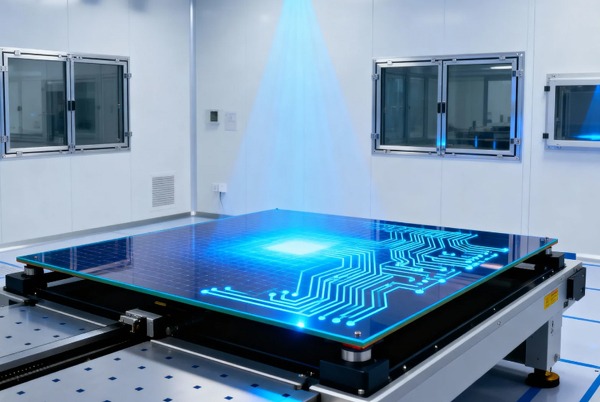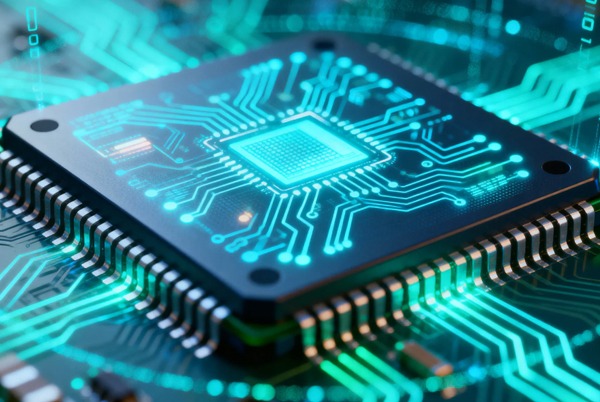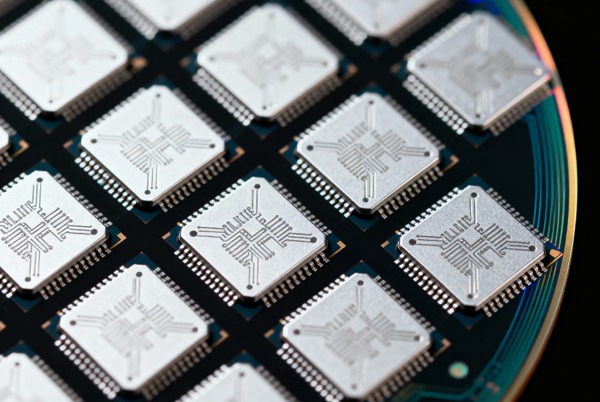Índice
¿Qué es un? Circuito integrado?
Un circuito integrado es un dispositivo electrónico en miniatura fabricado mediante procesos específicos de semiconductores que integran componentes electrónicos tales como transistores, resistencias, condensadores, diodos, y sus vías de interconexión en una única oblea semiconductora o sustrato dieléctrico. Estos componentes se forman estructuralmente en un todo completo y, tras el encapsulado, se convierten en una estructura en miniatura con funciones de circuito específicas.
Externamente, un circuito integrado suele presentarse como un pequeño bloque encapsulado con múltiples pines, pero en su interior se esconde un microcosmos increíblemente complejo. En los diagramas de circuitos, los circuitos integrados suelen representarse con símbolos como «IC» o «N».
¿Cómo funcionan los circuitos integrados?
Principios básicos de funcionamiento
La base del funcionamiento de los circuitos integrados reside en propiedades de los semiconductores y el principio de control del campo eléctricoEn pocas palabras, procesan, almacenan y transmiten información controlando los estados de conmutación de millones o incluso miles de millones de transistores dentro del chip.
Flujo de trabajo principal:
- Entrada de señalLas señales eléctricas externas entran en el circuito integrado a través de los pines de entrada.
- Procesamiento internoLos transistores dentro del chip amplifican, calculan o convierten las señales según la lógica diseñada.
- Resultado SalidaLas señales procesadas se transmiten a otros componentes del circuito a través de pines de salida.
Comprensión de la estructura jerárquica
Para comprender mejor los circuitos integrados, podemos adoptar una estructura jerárquica descendente:
- Nivel del sistema: Sistema completo de dispositivos electrónicos (por ejemplo, un teléfono inteligente).
- Nivel del módulo: Módulos funcionales dentro del sistema (por ejemplo, gestión de energía, procesamiento de señales).
- Nivel de transferencia de registros (RTL): Compuesto por registros y circuitos lógicos combinacionales.
- Nivel de puerta: Circuitos lógicos básicos (puertas AND, OR, NOT, etc.)
- Nivel de transistor: Las unidades de conmutación semiconductoras más básicas.
Transistores: los elementos centrales de los circuitos integrados
Los transistores son los componentes básicos fundamentales de los circuitos integrados, y se dividen principalmente en:
- Transistores de unión bipolar (BJT): Se utiliza con mayor frecuencia en las primeras etapas, con un mayor consumo de energía.
- Transistores de efecto de campo de óxido metálico (MOSFET): Predominante en los circuitos integrados modernos, bajo consumo energético, alta densidad de integración.
Al combinar transistores en diversas puertas lógicas y conectar estas puertas lógicas en circuitos complejos mediante tecnología de interconexión multicapa, se consiguen, en última instancia, potentes capacidades de procesamiento.

Sistema de clasificación de circuitos integrados
Clasificación por función y estructura
- Circuitos integrados analógicosProcesar señales analógicas que varían continuamente.
- Circuitos integrados digitalesProcesar señales digitales discretas.
- Circuitos integrados de señal mixtaProcesar señales analógicas y digitales simultáneamente.
Clasificación por nivel de integración
- SSICIntegración a pequeña escala (10-100 componentes)
- MSICIntegración a mediana escala (100-1000 componentes)
- LSICIntegración a gran escala (1000-10 000 componentes)
- VLSIC: Integración a muy gran escala (10 000-100 000 componentes)
- ULSIC: Integración a gran escala (100 000-1 millón de componentes)
- GSIC: Integración a escala gigabit (más de un millón de componentes)
Clasificación por campo de aplicación
- Circuitos integrados de propósito general: Circuitos estándar adecuados para diversas aplicaciones.
- Circuitos integrados específicos para aplicaciones (ASIC): Circuitos personalizados para aplicaciones específicas.
- Sistema en un chip (SoC): Integra todas las funciones del sistema en un solo chip.
Proceso de fabricación de circuitos integrados
La fabricación de circuitos integrados es uno de los procesos industriales más complejos que se utilizan en la actualidad. Los pasos principales incluyen:
- Preparación de obleas: Corte de cilindros de silicio de alta pureza en obleas delgadas.
- Oxidación: Formación de una capa aislante de dióxido de silicio sobre la superficie de la oblea.
- Fotolitografía: Transferencia de patrones de circuitos a la oblea mediante máquinas de fotolitografía.
- Grabado: Eliminación del exceso de material para formar estructuras de circuitos.
- Implantación de iones: Alteración de las propiedades conductoras del silicio.
- Metalización: Añadir cables de interconexión
- Pruebas y embalaje: Prueba de la funcionalidad del chip y aplicación de embalaje protector.
Este proceso debe repetirse docenas de veces para construir estructuras tridimensionales complejas a escala nanométrica.
Formas de embalaje de circuitos integrados
El embalaje no solo protege el chip, sino que también proporciona conexiones a circuitos externos:
- SOP: Paquete de contorno pequeño, pines con forma de alas de gaviota.
- PGA: Matriz de rejilla de pines, utilizada a menudo para microprocesadores.
- BGA: Matriz de rejilla de bolas, disposición de pines de alta densidad
- DIP: Paquete dual en línea, tradicional y ampliamente utilizado.

Características técnicas y ventajas de los circuitos integrados
- Miniaturización: Comprime circuitos complejos en espacios extremadamente pequeños.
- Bajo costoLa producción en masa reduce significativamente el coste unitario.
- Alto rendimientoLas rutas cortas de transmisión de señales permiten altas frecuencias de funcionamiento.
- Bajo consumo energéticoEl diseño moderno de circuitos integrados hace hincapié en la optimización de la eficiencia energética.
- Alta fiabilidad: La reducción de los puntos de conexión externos mejora la estabilidad.
Campos de aplicación de los circuitos integrados
Los circuitos integrados se han extendido por todos los rincones de la tecnología moderna:
- Electrónica de consumo: Teléfonos inteligentes, televisores, productos digitales.
- Sistemas informáticos: CPU, memoria, controladores de almacenamiento
- Equipos de comunicación: Chips para estaciones base, procesadores de red
- Control industrialSensores, controladores de automatización
- Electrónica del automóvil: Control del motor, sistemas de seguridad
- Equipos médicos: Instrumentos de diagnóstico, dispositivos implantables.
- Militar y aeroespacial: Radar, navegación, sistemas de comunicación
Futuras tendencias de desarrollo
A medida que la Ley de Moore se acerca gradualmente a sus límites físicos, la tecnología de circuitos integrados avanza hacia nuevas direcciones:
- Integración 3D: Aumento de la densidad de integración mediante el apilamiento vertical.
- Aplicaciones de nuevos materialesExploración de nuevos materiales como los nanotubos de carbono y el grafeno.
- Integración heterogénea: Integración de chips de diferentes procesos en un solo paquete.
- Computación cuántica: Paradigmas informáticos completamente nuevos basados en la mecánica cuántica.
- Computación neuromórfica: Diseños de chips que imitan los principios de funcionamiento del cerebro humano.
